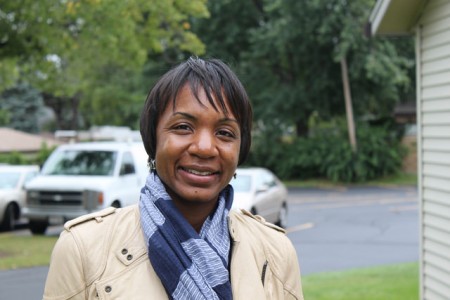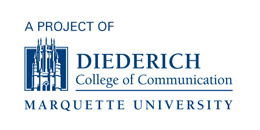
Don Tate, site supervisor for the Summer Youth Program in Capitol Heights, trains workers in lawn care techniques and proper use of lawn and garden equipment. (Photo by Matthew Wisla)
When a homeowner in Capitol Heights needed to relocate for a new job last summer, the opportunity came with a complication. How would she keep up with the lawn and yard work while the house sat vacant on the market and she was out of town?
The answer was landscaping services from the Capitol Heights Summer Youth Program. The program trains and employs young workers who perform weekly lawn care service for neighborhood residents. The Capitol Heights Neighborhood Association recently received a $15,000 grant from the Greater Milwaukee Foundation’s Healthy Neighborhoods Initiative to continue the program next summer.
Wrapping up its fourth year, the Summer Youth Program helps elderly and handicapped residents maintain their property while providing employment and job skills to young workers. By not letting properties run down, the program helps keep the neighborhood strong, according to Darlene Russell, senior program officer with the Greater Milwaukee Foundation, which has funded the Capitol Heights program annually.
The Capitol Heights Neighborhood Association administers the program, using Albright United Methodist Church as its fiscal agent. Last summer, a dozen workers maintained 67 properties during an eight-week period, helping to keep the neighborhood tidy and assisting residents with chores they can’t manage on their own. Capitol Heights is located on the west side, between Congress Street and Capitol Drive, and 60th and 68th Streets.

Antoinette Vaughn runs the Summer Youth Program in Capitol Heights and is the neighborhood’s Healthy Neighborhood coordinator. (Photo by Matthew Wisla)
The person-to-person interactions are the most rewarding parts of the program, said Antoinette Vaughn, Capitol Heights Healthy Neighborhood coordinator. “It brings older and younger generations together and shows workers that they can make a difference,” she said. “At the beginning the kids don’t know each other but by the end they bond like brothers.”
Rayshaun Perry, 20, worked on one of the crews. “I like that it’s a neighborhood thing and we’re out there with the people there. Plus for the workers it’s like a team where we are always there for each other,” he said.
Depending on their experience, workers are paid between $7.25 and $8.00 per hour. Perry said he used his paycheck “to help my mom and pay for school.” He is a student at the University of Wisconsin-Milwaukee.
Don Tate, the site supervisor for the program, trains workers in lawn care techniques and safe, proper use of lawn and garden equipment before they get busy cutting grass, trimming hedges, pulling weeds, edging along walkways and watering lawns. Tate taught shop at Milwaukee Public Schools for 24 years.
Tall, with an authoritative voice and demeanor, Tate has a reputation for earning respect from his young workforce. “Some start out the summer with an attitude like they don’t like being told what to do,” Tate said. “I tell them they need to understand the instructions and perform the task. If they do that, then each day I’ll just say hello to them in the morning and goodbye in the afternoon. Once they understand that we get along well.”
According to Russell, the training and experience workers receive are often invaluable. “They pick up skills that are transferable to future work in landscaping or running their own small business one day.”
Residents sign up at the beginning of the summer and pay a $25 fee to help defer equipment costs and support the program. They provide cold water for the workers and many pass out popsicles and other summertime treats. The workers come from Capitol Heights and other Milwaukee neighborhoods.
Vaughn has seen firsthand how the program helps strengthen the whole neighborhood. “Appearances and upkeep say a lot about a neighborhood and it makes a difference,” she said. The program started in 2010 and has expanded over the years. In the beginning four workers maintained 28 lawns and the program lasted just four weeks.
Russell highlighted the connection between programs such as the Summer Youth Program and neighborhood property values.
“When other residents see things being taken care of, it builds their confidence in their neighborhood so they are more willing to invest in their property. As more residents invest, property values increase and neighborhoods get stronger.”






I would like information in regards how to get a grant for the lawn care program. Thank you
Hi Ericka, are you looking to start a similar program in your neighborhood?
Darling this Felicia please contact me I need your help with your summer program so. Can pay and be signed up please.